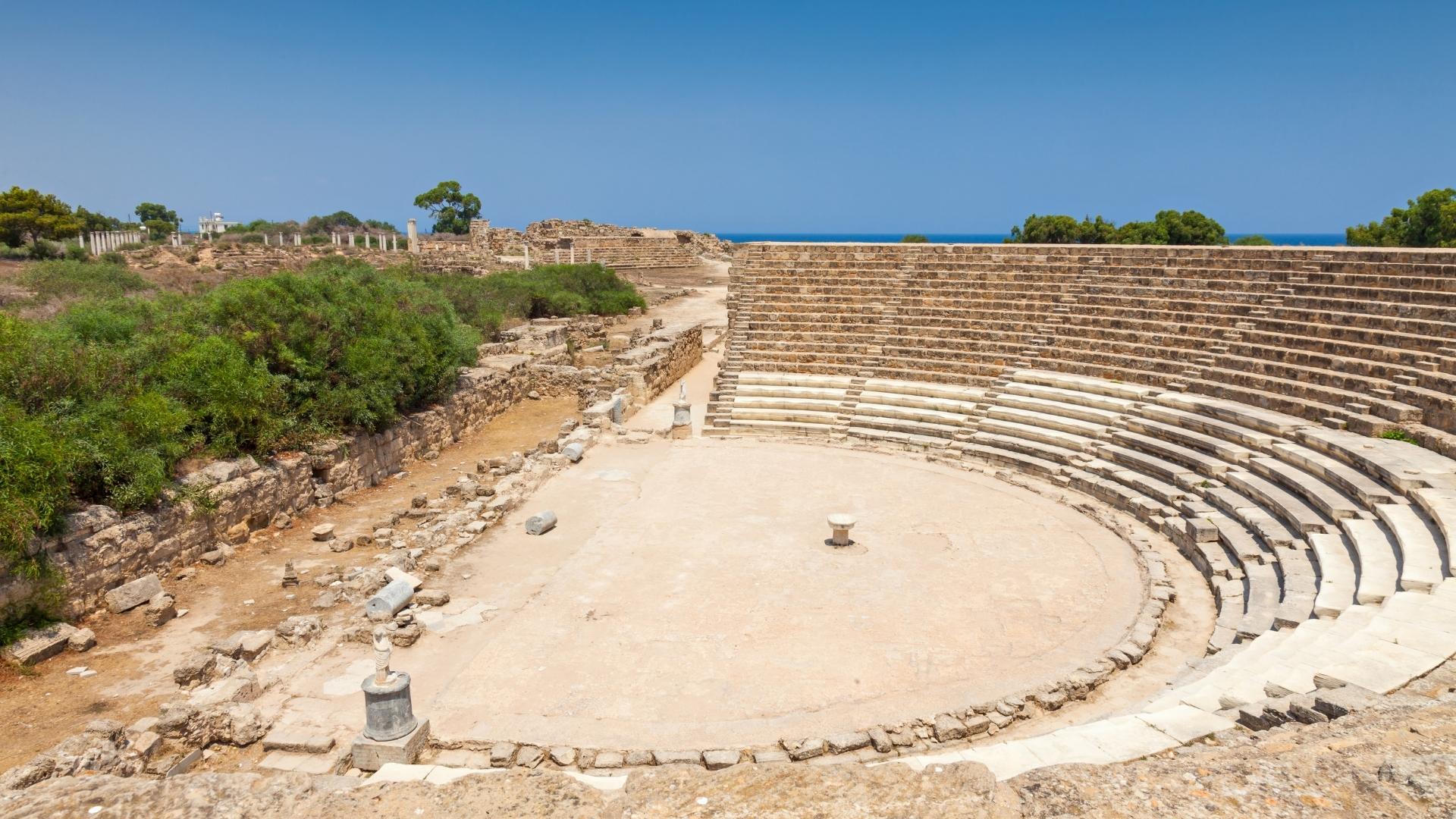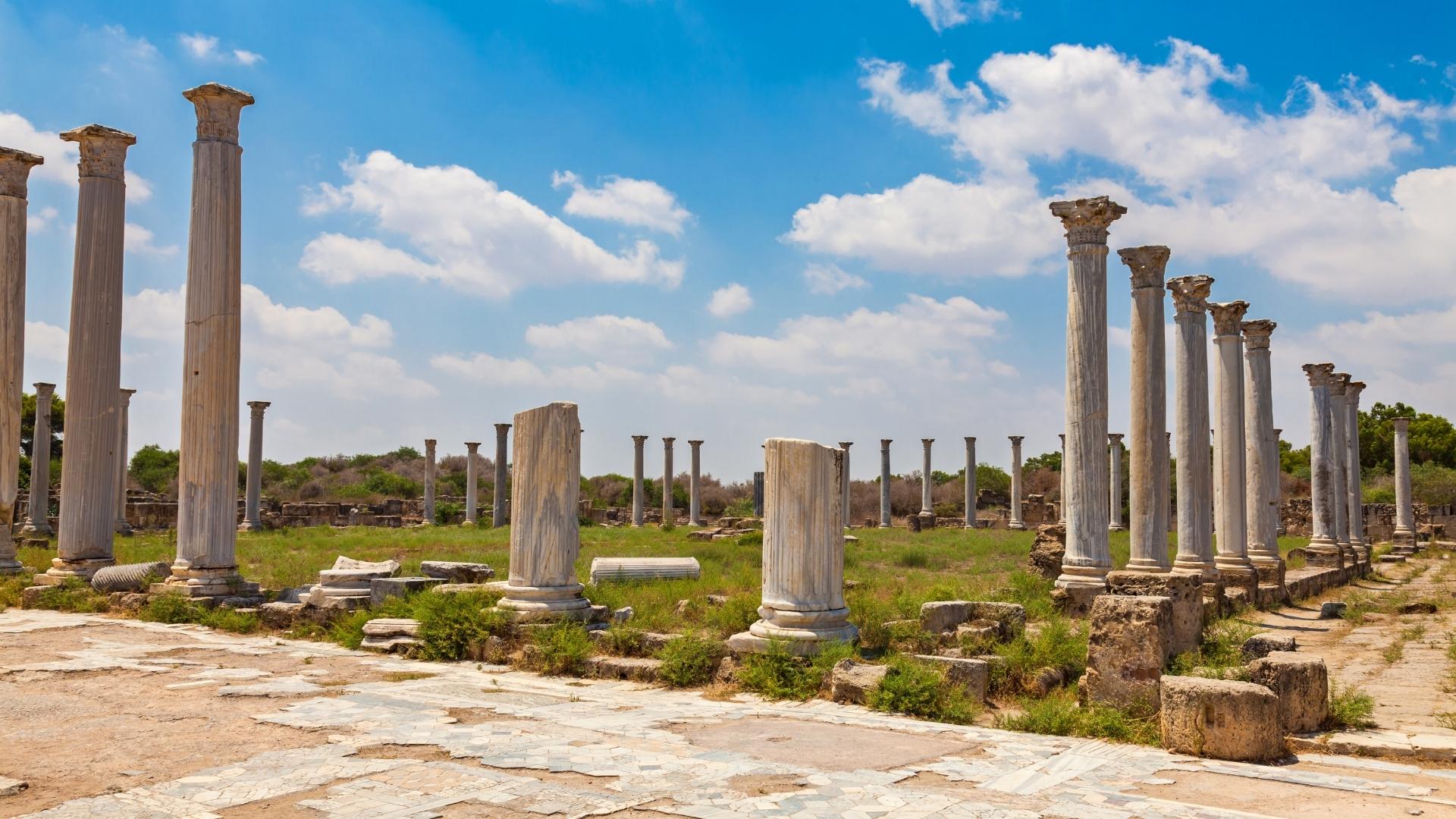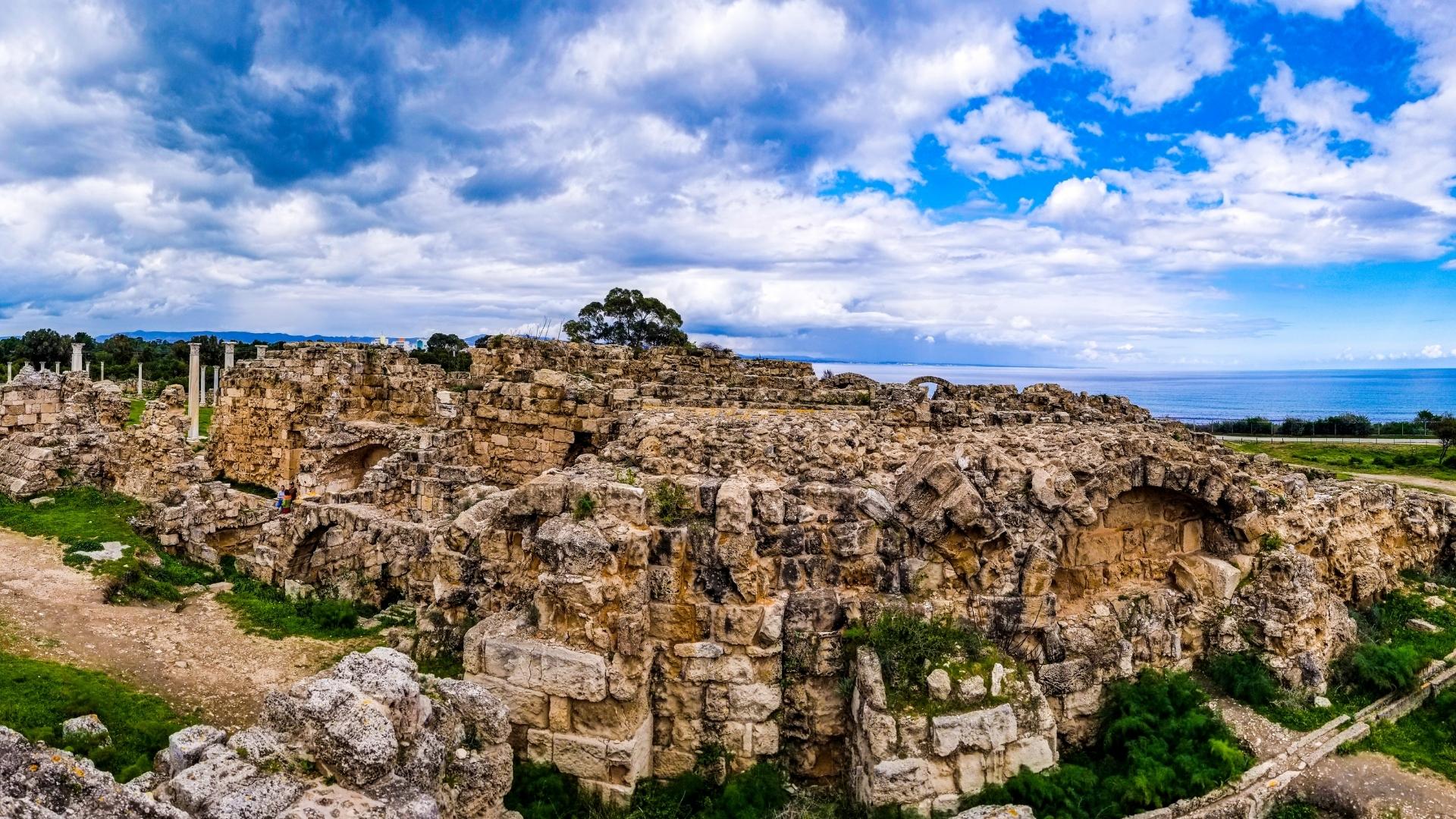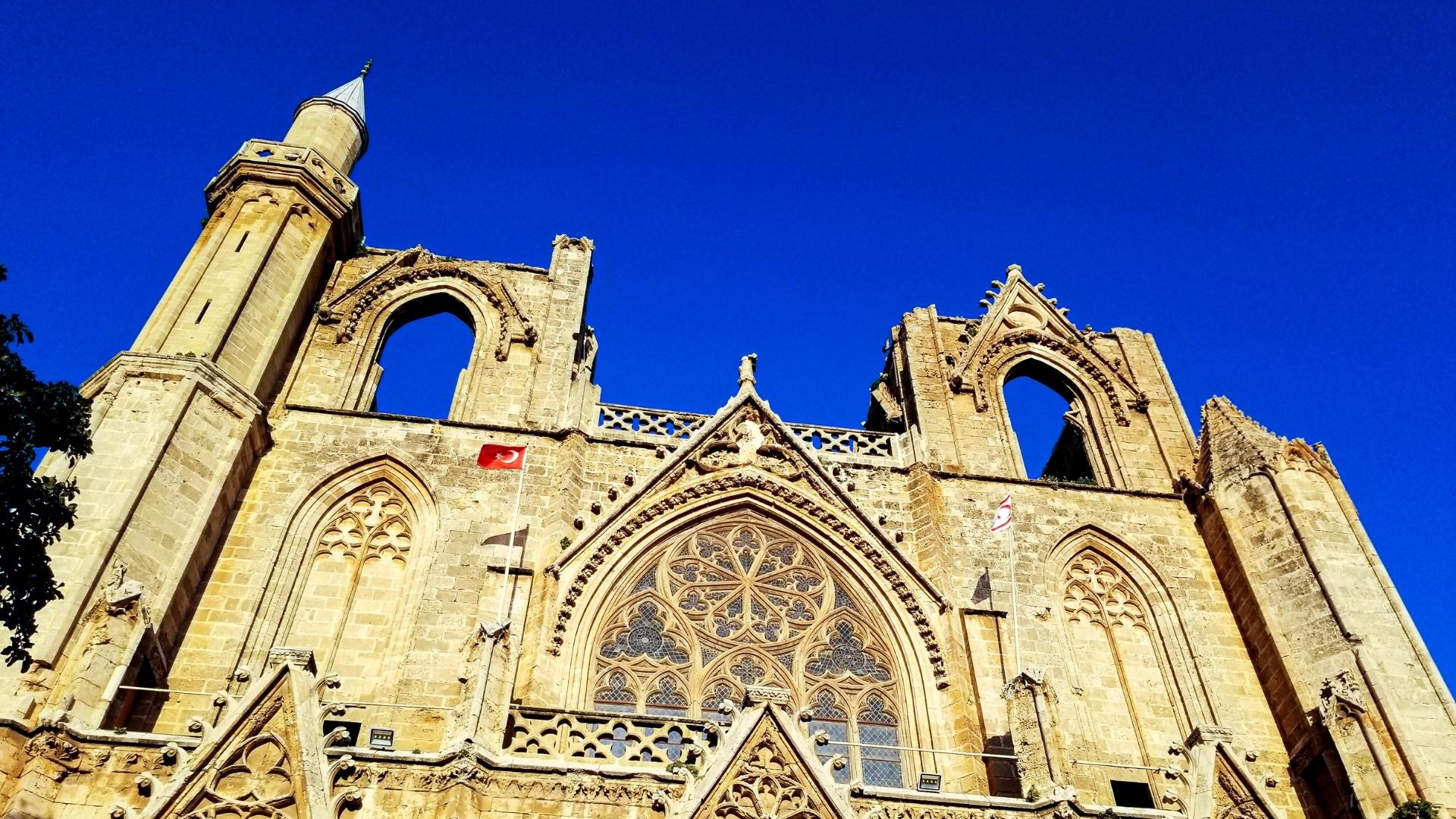The ruins of the ancient city of Salamis are undoubtedly one of the most impressive sights you can visit on the island of Cyprus. The history of the Salamis ruins alone has so many amazing twists and turns that an article about it would fill several pages.
In this article, you will learn about the background of the famous Salamis Ruins, where to find them and what makes them so special. We are absolutely convinced that after reading this, you will be eager to see this wonder of Cypriot history with your own eyes! So if you wonder what to do in Cyprus, give Salamis Ruins a chance!

Where Can You Find the Salamis Ruins and How Do You Get There?
The ruins of the ancient city of Salamis can be found in the east of Cyprus, more precisely on the Karpaz Peninsula. It is located on a bay, which is about 6 km north of Famagusta. The site of today’s Salamis ruins stretches along the northern Cypriot coast.
To reach the Salamis Ruins, located in North Cyprus, you will need to drive about 20 minutes. If you don’t want to travel with your own vehicle, you can also book a guided tour to the Salamis Ruins.

The Founding Myth of Salamis
The foundation of the ancient city, which you can see today in the form of the Salamis ruins, is connected with numerous legends. According to the myth, Salamis was founded by Teukros only a short time after the destruction of the Greek city of Troy. There he built a temple dedicated to Zeus, the Greek father of the gods.
By the way, the name of the city Salamis comes from the home of Teukros. This is the Greek island in the Aegean Sea, which also goes by the name of Salamis.

What Makes Salamis Ruins So Special?
The remains of the Iron Age city of Salamis look back on an eventful history. This includes occupations by various other rulers – including the Egyptians, Assyrians, Persians and Romans.
Sure, many ancient cities that lie in ruins today can claim this. But what sets the Salamis ruins apart from other ancient archaeological sites is one particular fact. A large part of it lies underwater today. So it was not other peoples who caused the downfall of Salamis, but the forces of nature alone.
Salamis Ruins as an Archaeological Site
With such an eventful and long history, it is no wonder that archaeologists, in particular, are interested in the ruins of Salamis. To this day, many parts of the ancient city are still buried, just waiting to be discovered during excavations. So what you see today is only a small part of what Salamis still has to offer.
Most of the finds date back to a period between the 3rd and 4th centuries B.C. A large part of the archaeological finds is now part of the collection of St. Barnabas Monastery. But also in the British Museum in London, many of the discoveries unearthed during the excavations are among the exhibits.

Most Important Things to See in Salamis Ruins
Gymnasium
The old gymnasium is undoubtedly one of the sights of Salamis Ruins that you can admire during a visit today. Meanwhile, the gymnasium, as well as the theatre, have even been renovated.
The Gymnasium was built after the severe earthquake that destroyed large parts of Salamis in 76 AD. The construction took place during the reign of the Roman Emperor Trajan.
Later, two more swimming pools were added. These are surrounded by numerous statues. You can find them at the southern end of the square.
Walking through the Salamis ruins, you will surely notice that some columns and pedestals do not match at all. Archaeologists suspect that this is due to another earthquake that struck the city in 331 AD. As a result, the inhabitants rebuilt some columns.
In the central courtyard, you will find some statues without heads. Probably these were cut off during an earthquake and taken away during archaeological excavations.
In the southwest, you can still discover some latrines arranged in a semicircle. Today you can still see the pipelines as well as the water tanks. There is another complex in the corner opposite, but this one is not in such an excellently preserved condition.
Roman Amphitheater
The Roman Amphitheater, which you will find south of the Gymnasium, is also one of the impressive highlights of the Salamis ruins. It was first discovered during excavations in 1959. Like the Gymnasium, this structure has also been extensively renovated.
According to archaeologists’ estimates, construction took place under Emperor Augustus. It was not until the 2nd century AD that the construction of the Roman amphitheatre of today’s Salamis ruins was completed.
Especially the position distinguishes this amphitheatre from other Roman theatres. While most of them are built into a hill, the amphitheatre of Salamis is freestanding.
The auditorium, built of limestone, was supported by arches at that time. However, only a few of the original seats for the spectators remain today. Today, the Roman amphitheatre in the Salamis ruins can seat 15,000 people.
Meanwhile, it is even used again for performances. Especially concerts and festivals in North Cyprus are among the events that take place here regularly. Among the artists who have already performed here are José Carreras and Boney M.
Temple of Zeus
The main temple of the ancient city, now in ruins, is located south of the Agora. Until today, however, there have been few archaeological excavations here. For this reason, most of the temple is not visible until today.
The ground plan of the temple of Zeus included a raised temple, which was located at the end of a portico. Especially the limestone from which the temple was built is a real treat for the eyes. The porch, adorned with twelve columns, is also definitely worth a visit!
Now you know what to expect when visiting the Salamis ruins. We can guarantee that you won’t regret taking a trip to this ancient archaeological site from Famagusta! If you want to explore a few more places near Famagusta, we recommend you to visit Varosha Ghost town, too!
